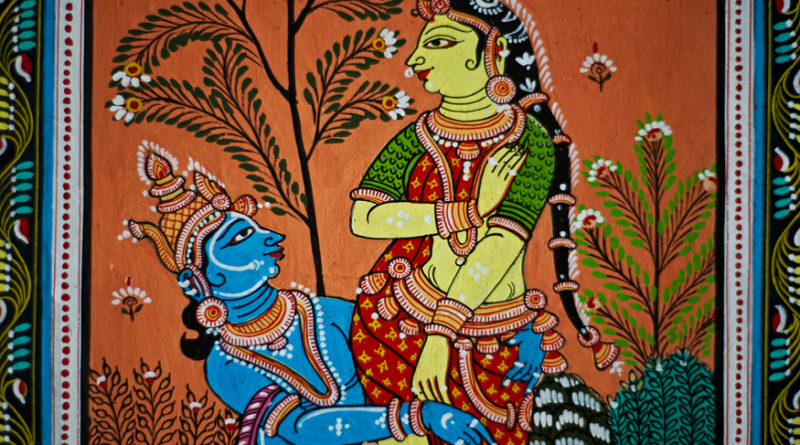Article 3 Decorate your home with these 5 types of ethnic paintings
A piece of art becomes eternal when it resonates with each generation. Indian art paintings are a great way to add colors to pop your walls with an ethnic touch. There are different types of Indian paintings, catering to different sensibilities, ranging from the packed canvases of Madhubani art and Pattachitra art to singular figurines of Kalighat art. Indian art is showing devotion with several examples of such timeless genres of art.
Pattachitra art
Pattachitra art started as a business in the tenth and eleventh century A.D. when scroll painters would bring an involved Pattachitra painting to describe stories. They would be welcomed by rich families to speak folktales and perform at specific events. For a Pattachitra painting, specialists hardly make rough portrayals with pencils or charcoal. Rather they plunge into the canvas directly with a paintbrush, print characters cautiously. Pattachitra art normally centers around Jagannath sanctuary, Panchamukhi Ganesh, folktales, and stories from Hindu mythology. These Indian paintings compositions are an extraordinary method to add color and history to your house.
Madhubani art
Madhubani art started as a type of Bhitti Chitra (wall art) as Raja Janak had ordered for the entire town to be decked up for his girl, Sita’s wedding to Rama. Madhubani painting continuously moved to handmade paper which was frequently made with Multani mitti, neem squeeze, and cow dung—resembling a wall—a subtle ode to its origins. Madhubani art isn’t generally religious and has neutral themes like social issues and popular culture stories. This is the thing that makes this popular Indian art form evergreen. A Madhubani painting additionally has components of Feng shui, making it a very much wanted art form to attract good listeners.
Kalighat art
Kalighat art receives its name from the Kalighat region of Bengal, where it appears to have begun. A Kalighat painting is fundamentally a compressed type of a Pattachitra painting, with minor characters and more negative space. Subsequently, a Kalighat painting will consistently draw attention to one or a couple of figurines, rather than describing elaborate stories. Indian art paintings from Kalighat art can either be religious, exhibiting gods and goddesses, or portray social issues like Bengal’s Babu Culture.
Pichwai art
Pichwai art is one of the most well-known Indian works of art, Pichwai art began as a means to decorate temple walls. Typically, a Pichwai painting is devoted to Srinathji, an avatar of Lord Krishna as a 7-year-old newborn child. Still, throughout the long term, Indian art paintings of this type have acquired momentum because of their lively symbols and motifs. Pichwai art has a bright color palette including red, yellow, green, and black. A Pichwai painting is known for its utilization of special symbols like trees, lotuses, cows, and peacocks.
Classical Indian Art
Classical Indian Art can ship you to a former period with its intrinsic capacity to make each scene alive. Indian art paintings of this sort are an essential piece of our artistic inheritance. In addition to the fact that it reflects India’s artistic ability, Classical Indian Art additionally goes about as a legitimate source of history and literature. Having a Classical Indian painting turned into an essential piece of royal families that authorized a few of these works. Today, Classical Indian Art is partitioned into four schools—Rajasthani, Mughal, Deccani, and Pahari.
A piece of art and paintings becomes ageless when it resonates with each generation. A work of art proceeded with relevance is the thing that makes it a timeless beauty.

